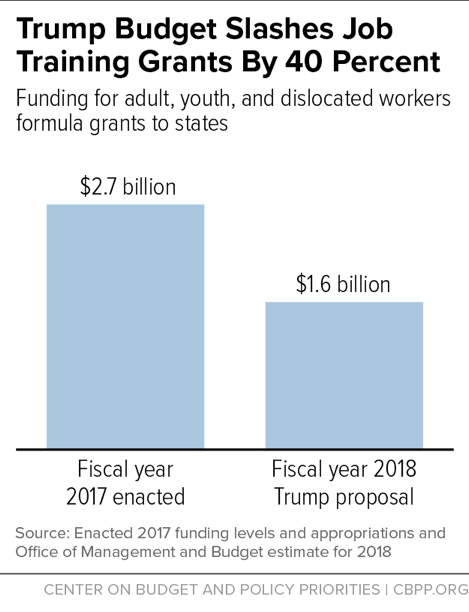BEYOND THE NUMBERS
Ohio TANF Waiver Denial Continues Trump Administration’s Attack on Work Programs
The Trump Administration has denied Ohio’s request for a Temporary Assistance for Needy Families (TANF) program waiver that would have helped the state integrate workforce services that now vary by program and provided TANF recipients with greater access to education and training opportunities to prepare them for better jobs. Yesterday’s denial of the state’s waiver accompanied a notice to states that rescinded an Obama Administration notice that states could request waivers to improve their TANF work programs. While the Administration claims this action “restored work requirements for TANF,” the reality is that states have imposed work requirements on TANF recipients for 20 years — even though the evidence shows they often leave the most vulnerable families without cash assistance or work.
These decisions continue the Administration’s assault on programs that aim to increase the ability of the most disadvantaged people to qualify for quality jobs that pay a living wage. In his 2018 budget, President Trump proposed to cut funding for the Workforce Innovation and Opportunity Act (WIOA) by 41 percent, from $2.7 billion in 2017 to $1.6 billion in 2018 (see chart). He also proposed cutting the Employment Service, a key component of the nation’s One-Stop Career Centers, by 37 percent, from $691 million to $436 million, and the TANF block grant by 10 percent, from $16.5 to $14.9 billion.
WIOA gives states and communities funding for job training for adults, dislocated workers (generally those who’ve recently lost jobs due to layoffs or those who receive or have exhausted unemployment insurance benefits), and young people (with an emphasis on youth who are neither in school nor working). And as a key partner in the workforce system, the Employment Service seeks to improve the nation’s labor markets by bringing together people who are looking for work and employers that are seeking workers.
The President has called for these deep cuts despite bipartisan legislation in 2014 to update these job training programs, including placing a greater emphasis on training for in-demand occupations, encouraging replication of program models with evidence of effectiveness, and encouraging work-based learning models that allow workers to earn while they are learning. WIOA also strengthened performance measurement so workers have the information they need to choose the most effective job training programs.
By denying Ohio and other states the opportunity to align TANF work programs with the rest of the workforce system, the Administration continues the 20-year failed policy of restricting TANF recipients’ access to education and training opportunities that can increase their chances of securing higher-paying jobs. Work requirements don’t build the skills that individuals need to succeed in today’s labor market. They also don’t create jobs where they don’t exist, convince employers to hire people with limited skills or criminal backgrounds, address the need for supportive services like child care and transportation, or address barriers to work like mental or physical health problems. And, critically, the design of TANF work requirements discourages states from providing employment assistance to parents with the greatest employment barriers — even though they have the most to gain from participating in high-quality employment and training programs.

